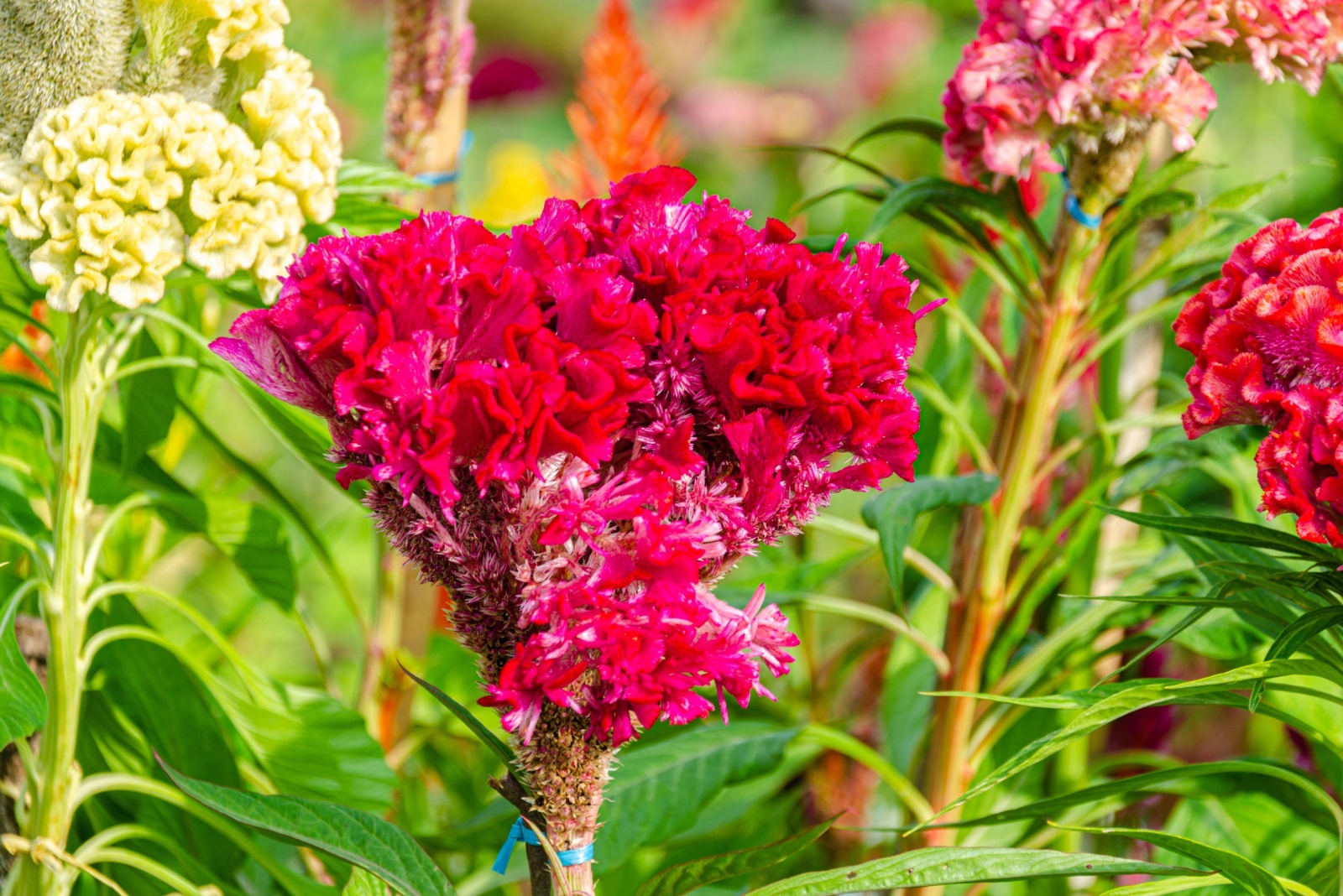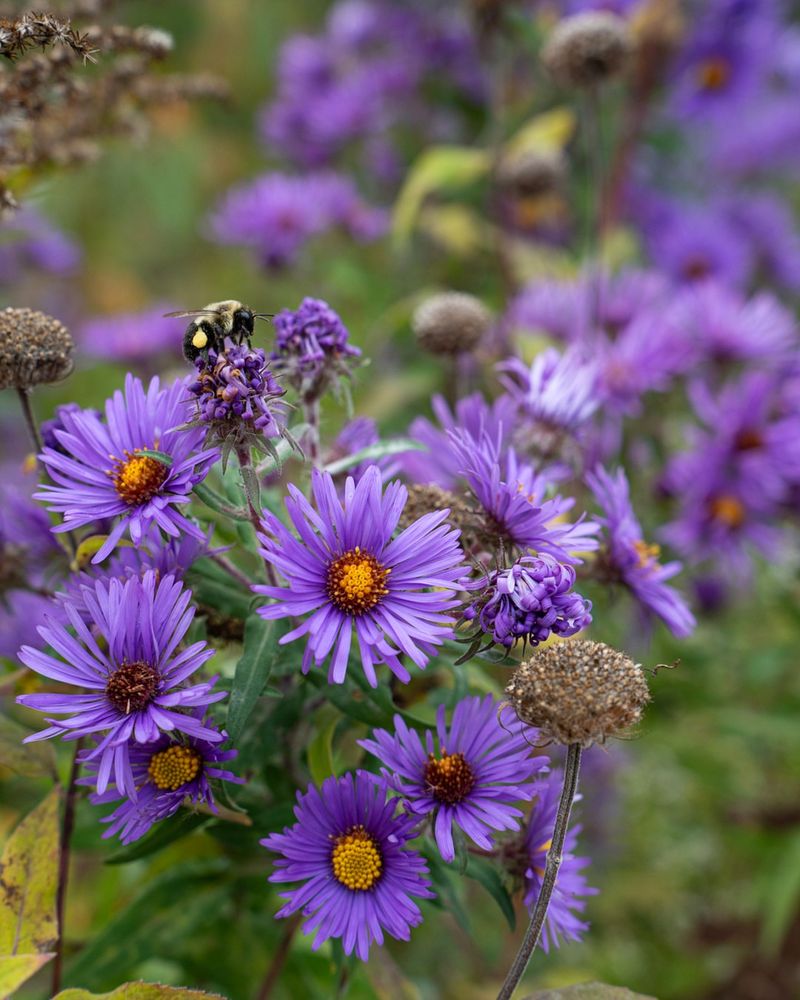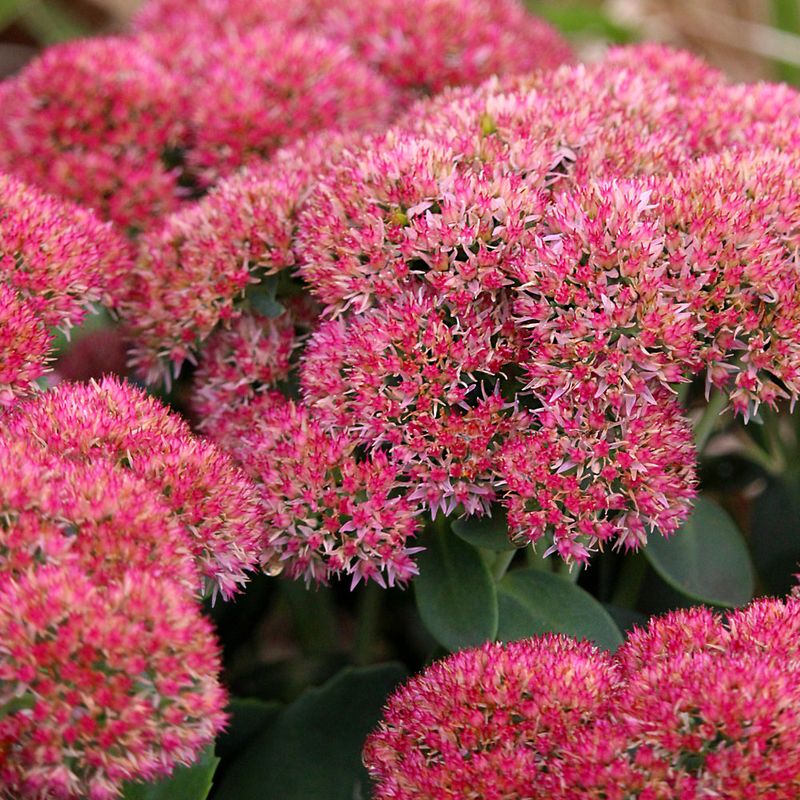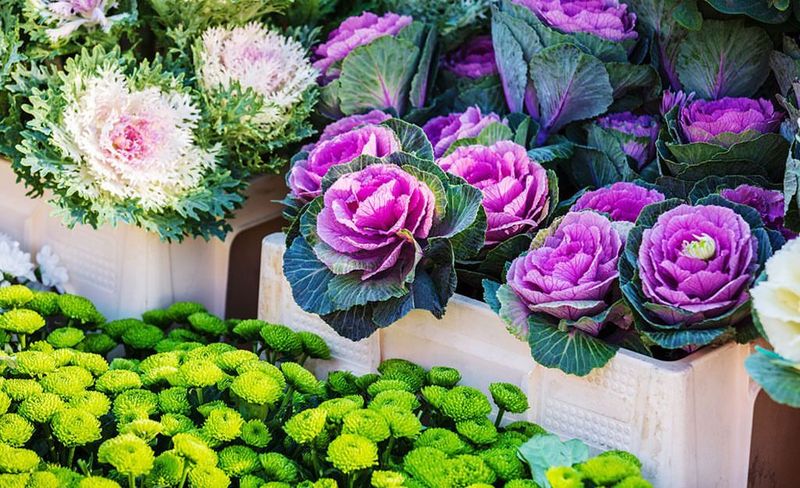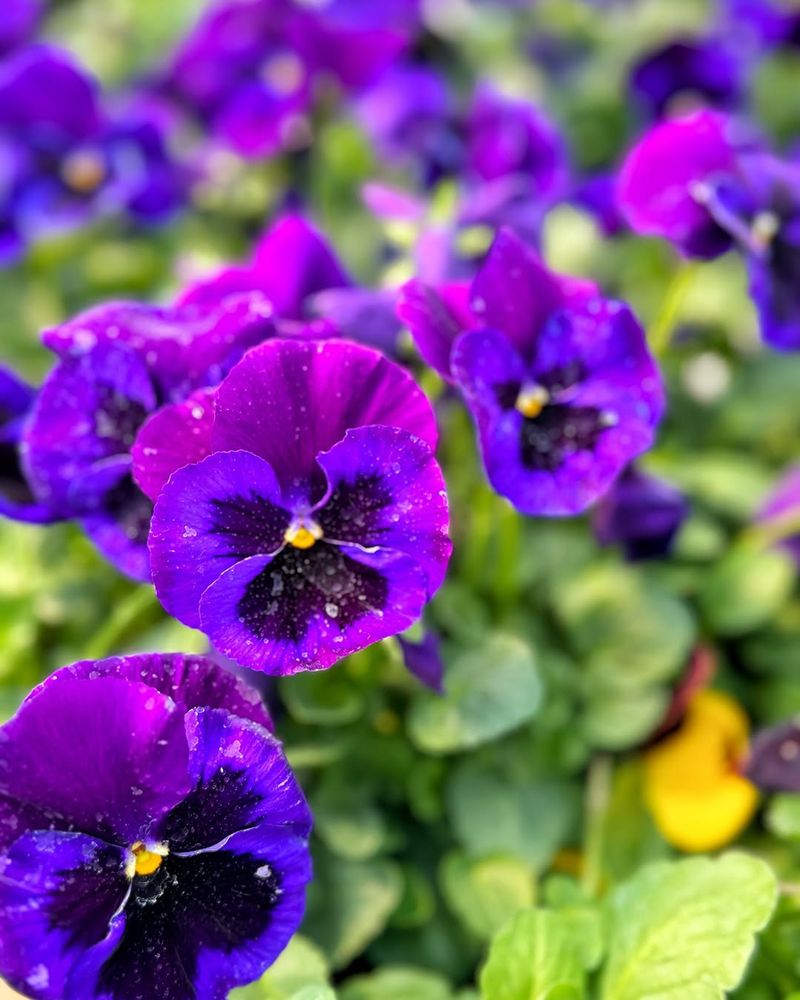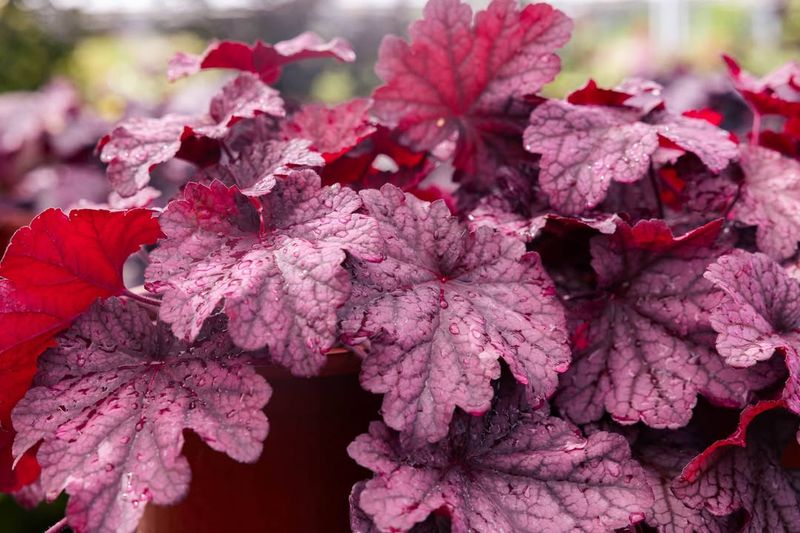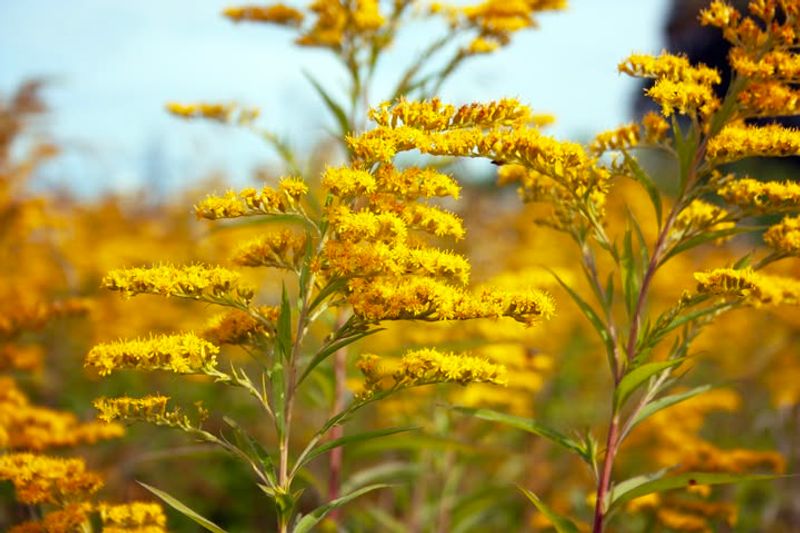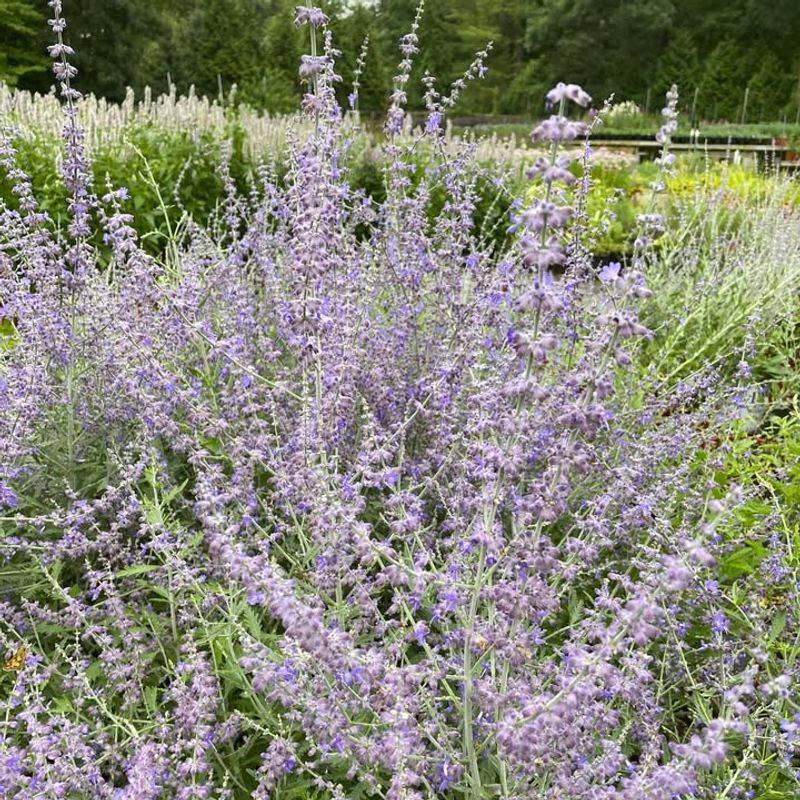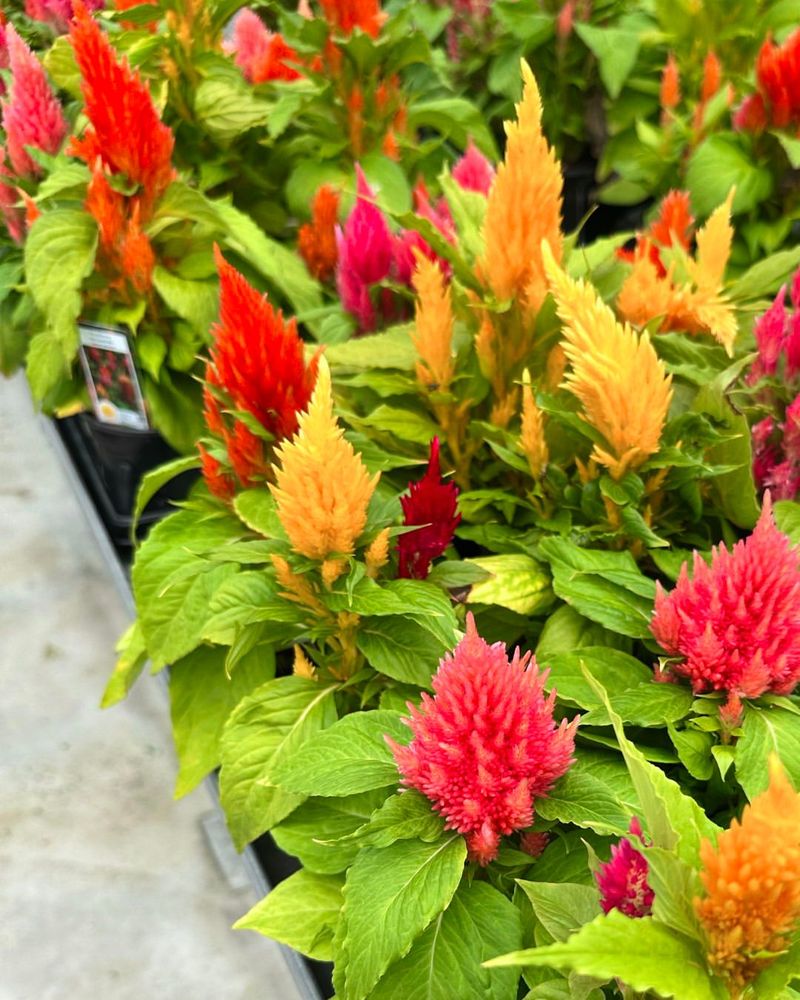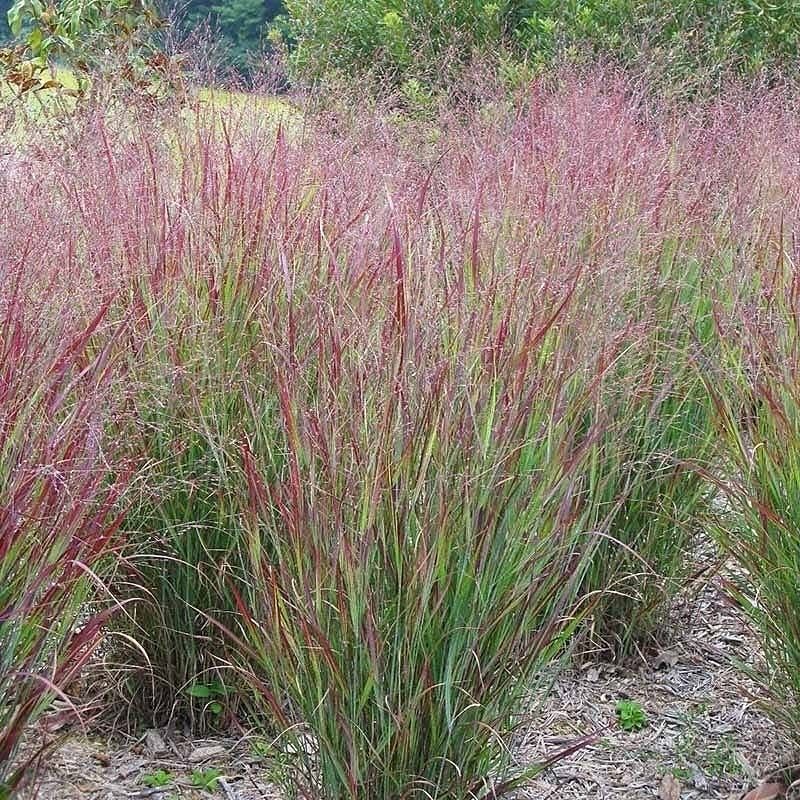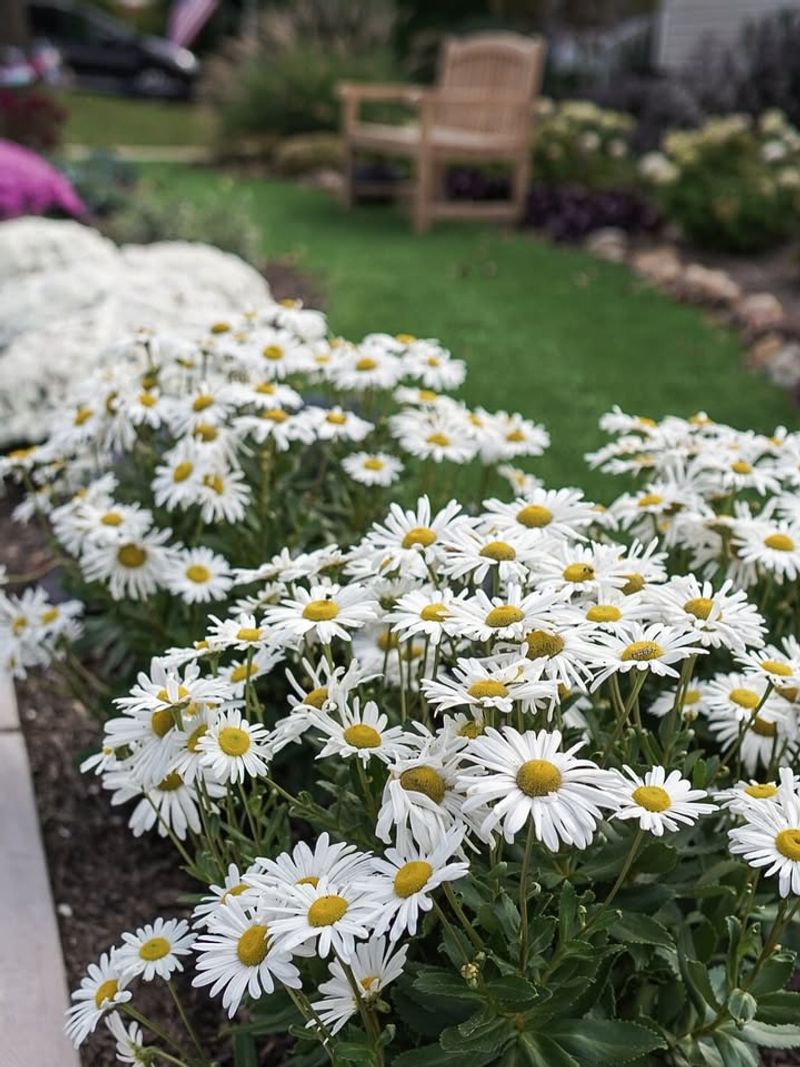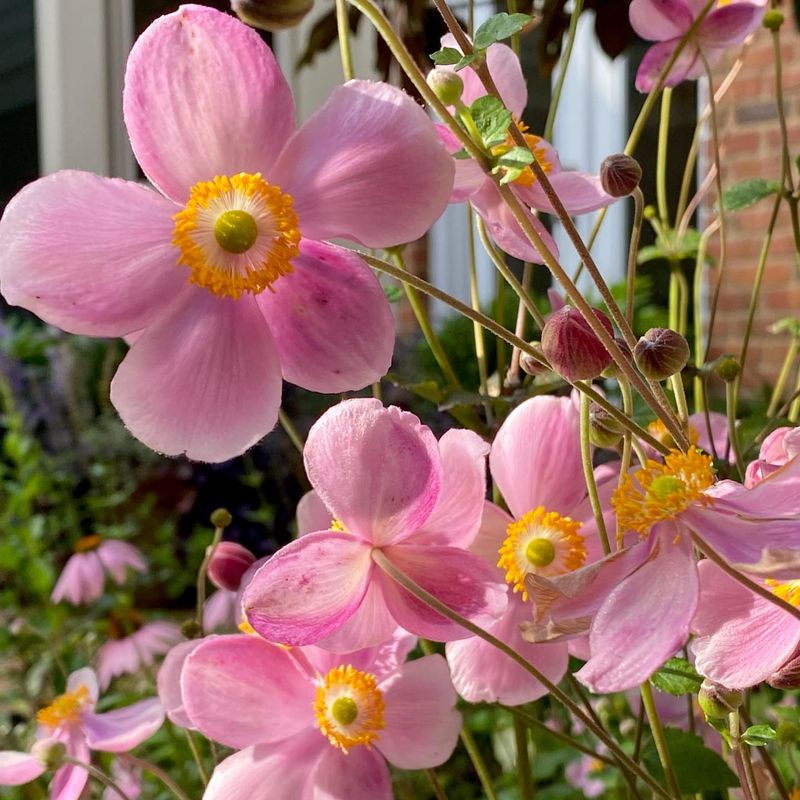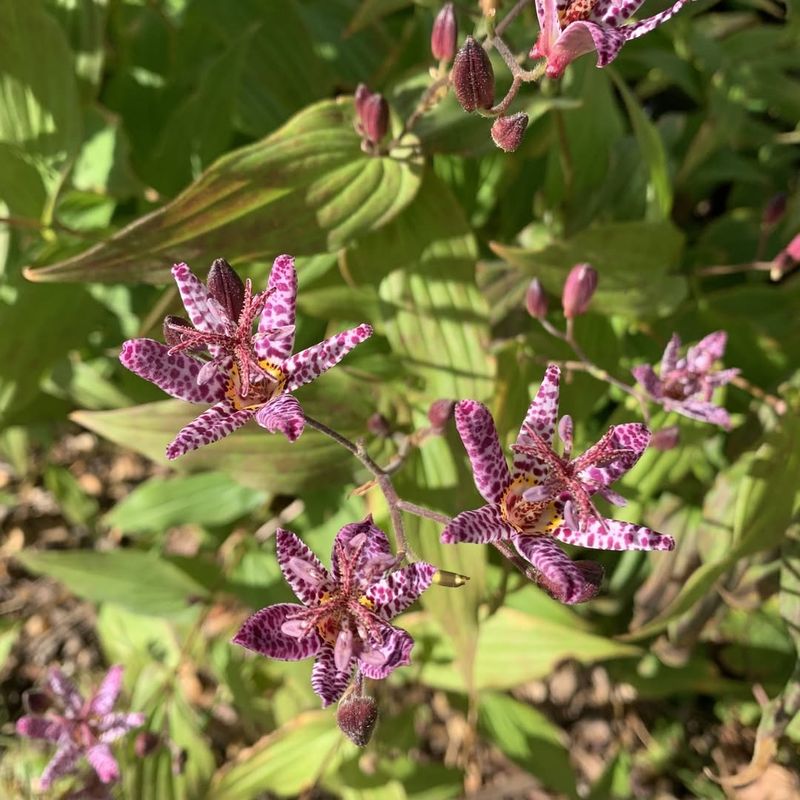Mums have been the go-to choice for fall gardens across Pennsylvania for years, but they’re certainly not your only option. Many other beautiful plants can bring stunning autumn colors to your yard while lasting just as long, if not longer.
If you’re looking for bold blooms, colorful foliage, or something totally different, these alternatives will keep your garden looking gorgeous all season long.
1. Asters
Butterflies absolutely adore asters, making them a lively addition to any autumn landscape. Their star-shaped blooms come in shades of purple, pink, white, and blue, creating a dreamy display from late summer through the first frost.
Native to North America, asters thrive in Pennsylvania’s climate and require minimal care once established. They prefer full sun and well-drained soil, making them perfect for borders and flower beds.
Unlike mums, asters often reseed themselves, giving you free plants year after year.
2. Sedum
Tough as nails, sedum varieties like Autumn Joy bring rich, rusty-red hues to gardens without demanding much attention. The thick, succulent leaves store water efficiently, meaning you won’t need to water constantly during dry spells.
Flower heads start out pale pink in late summer, then deepen to copper and bronze as temperatures drop. Bees and beneficial insects flock to these blooms for late-season nectar.
Even after frost kills the flowers, the dried seed heads remain attractive throughout winter.
3. Ornamental Kale And Cabbage
Forget everything you know about boring vegetables—ornamental kale and cabbage are absolute showstoppers! Their ruffled leaves transform into vibrant shades of purple, pink, white, and green as nights grow cooler.
Cold weather actually intensifies their colors rather than killing them off. They can survive temperatures well below freezing, often lasting until December or even January in Pennsylvania.
Plant them in containers, borders, or mass them together for a bold, textured display that’s completely different from traditional flowers.
4. Pansies
With cheerful little faces in every color imaginable, pansies bring instant happiness to fall gardens. Most people think of them as spring flowers, but cold-hardy varieties actually perform beautifully in autumn weather.
Pennsylvania’s mild fall temperatures are perfect for pansies, which can bloom right through light frosts and snowfalls. Their compact size makes them ideal for containers, window boxes, and edging pathways.
Mix different colors together for a rainbow effect, or stick with one shade for elegant simplicity.
5. Heuchera (Coral Bells)
Grown primarily for their knockout foliage, heuchera leaves come in jaw-dropping shades of burgundy, amber, caramel, lime, and even near-black. Delicate flower spikes appear as a bonus, but the leaves are definitely the main attraction.
Pennsylvania gardeners love heuchera because it tolerates shade beautifully while adding color to darker corners. The foliage stays vibrant throughout fall and often remains semi-evergreen through winter.
Pair different varieties together for a stunning tapestry of autumn hues.
6. Goldenrod
Despite its bad reputation for causing allergies (ragweed is actually the culprit), goldenrod deserves a spot in your fall garden. Brilliant yellow plumes create a cheerful contrast against the cooling autumn landscape.
Native Pennsylvania goldenrod species support countless beneficial insects and pollinators preparing for winter. The plants are incredibly low-maintenance and drought-tolerant once their roots are established.
Did you know? Goldenrod was even considered as a potential state flower for Pennsylvania before the mountain laurel won out.
7. Russian Sage
Silvery foliage and misty purple-blue flowers give Russian sage an almost magical quality in autumn gardens. The aromatic leaves release a pleasant fragrance when brushed against, adding a sensory dimension beyond just visual appeal.
Extremely drought-tolerant and deer-resistant, this plant practically takes care of itself. It blooms from midsummer straight through fall, providing months of reliable color.
Pennsylvania’s full sun and well-drained conditions are exactly what Russian sage craves for optimal performance and longevity.
8. Celosia
Looking like flames frozen in time, celosia’s vibrant plumes and crested blooms command attention in brilliant shades of red, orange, yellow, and pink. The unusual texture adds dramatic interest that you simply can’t get from typical fall flowers.
Heat-loving celosia transitions beautifully into autumn, continuing to bloom until a hard frost finally stops it. The flowers also dry exceptionally well for indoor arrangements.
Plant them where you want a bold, tropical-looking statement piece in your Pennsylvania landscape.
9. Switchgrass
Movement and texture come alive when switchgrass sways in cool autumn breezes. This native Pennsylvania grass transforms from green to stunning shades of gold, orange, and burgundy as fall progresses.
Wispy seed heads catch morning light beautifully, creating an almost glowing effect in your garden. Birds appreciate the seeds as a valuable food source heading into winter months.
Switchgrass requires virtually no maintenance and tolerates both wet and dry soils, making it adaptable to various Pennsylvania garden conditions.
10. Montauk Daisy
Clean white petals surrounding sunny yellow centers make Montauk daisies a refreshing change from typical autumn oranges and reds. Blooming heavily in September and October, they brighten gardens when many other perennials are fading.
Originally from coastal areas, these tough plants handle Pennsylvania’s variable fall weather with ease. Their compact, shrubby growth habit looks attractive even before flowers appear.
Butterflies and bees visit constantly, making your garden a hub of late-season pollinator activity.
11. Japanese Anemone
Elegant and graceful, Japanese anemones dance on tall stems above attractive foliage throughout autumn. Their delicate-looking blooms come in shades of pink and white, adding a softer touch compared to bolder fall flowers.
Once established in Pennsylvania gardens, these perennials spread gradually to form beautiful colonies. They actually prefer some afternoon shade, making them perfect for spots where mums might struggle.
Blooming from late summer through October, they bridge the gap between summer and winter beautifully.
12. Toad Lily
Exotic-looking spotted blooms make toad lilies conversation starters in any fall garden. Their orchid-like flowers feature intricate purple spots and markings that look almost too perfect to be real.
Shade-loving toad lilies thrive in woodland settings where many fall bloomers won’t grow. They bloom late in the season, often continuing until the first hard freeze arrives in Pennsylvania.
The unusual name comes from Filipino farmers who supposedly rubbed the plant on their hands to catch frogs—quite the quirky origin story!

